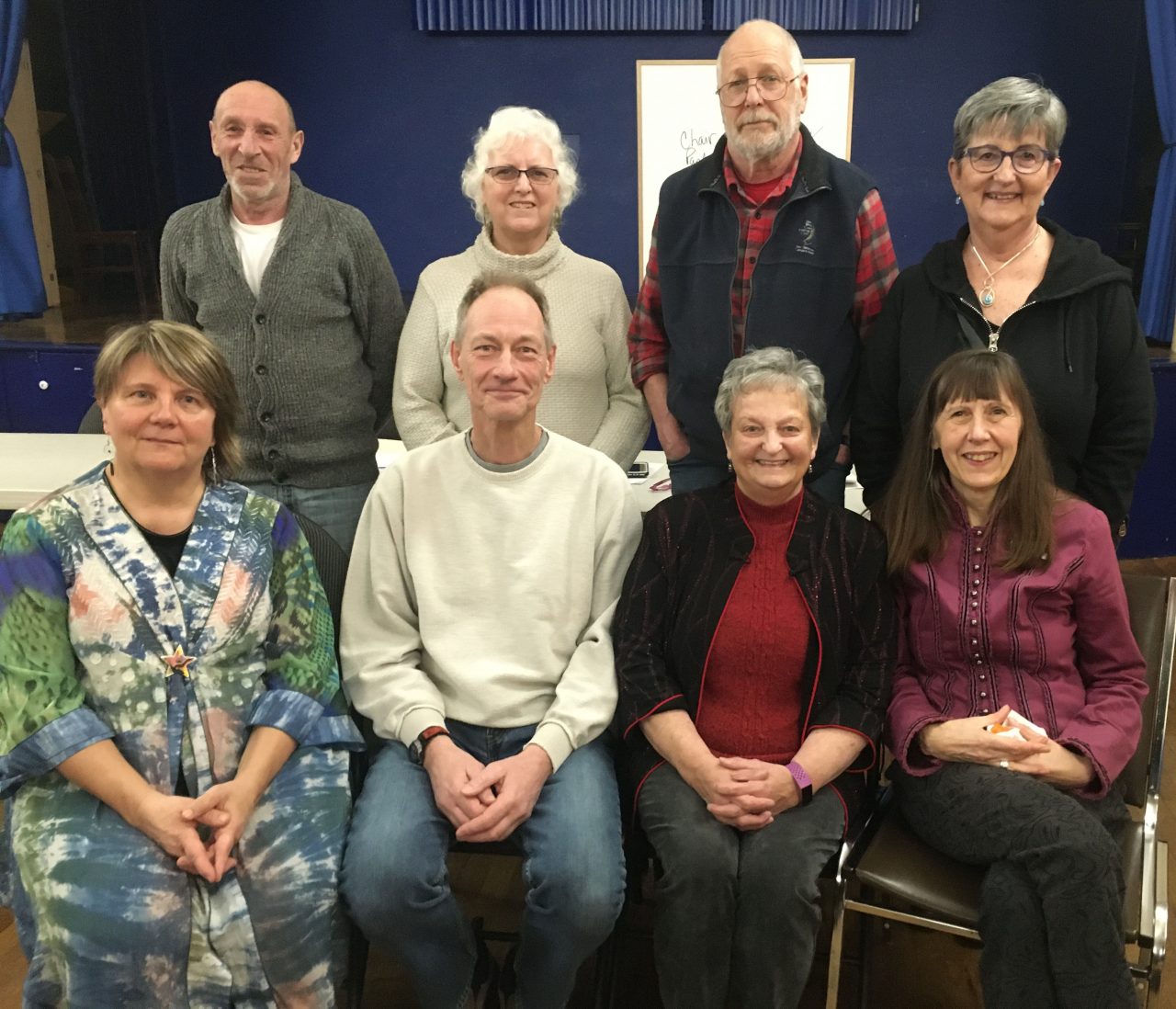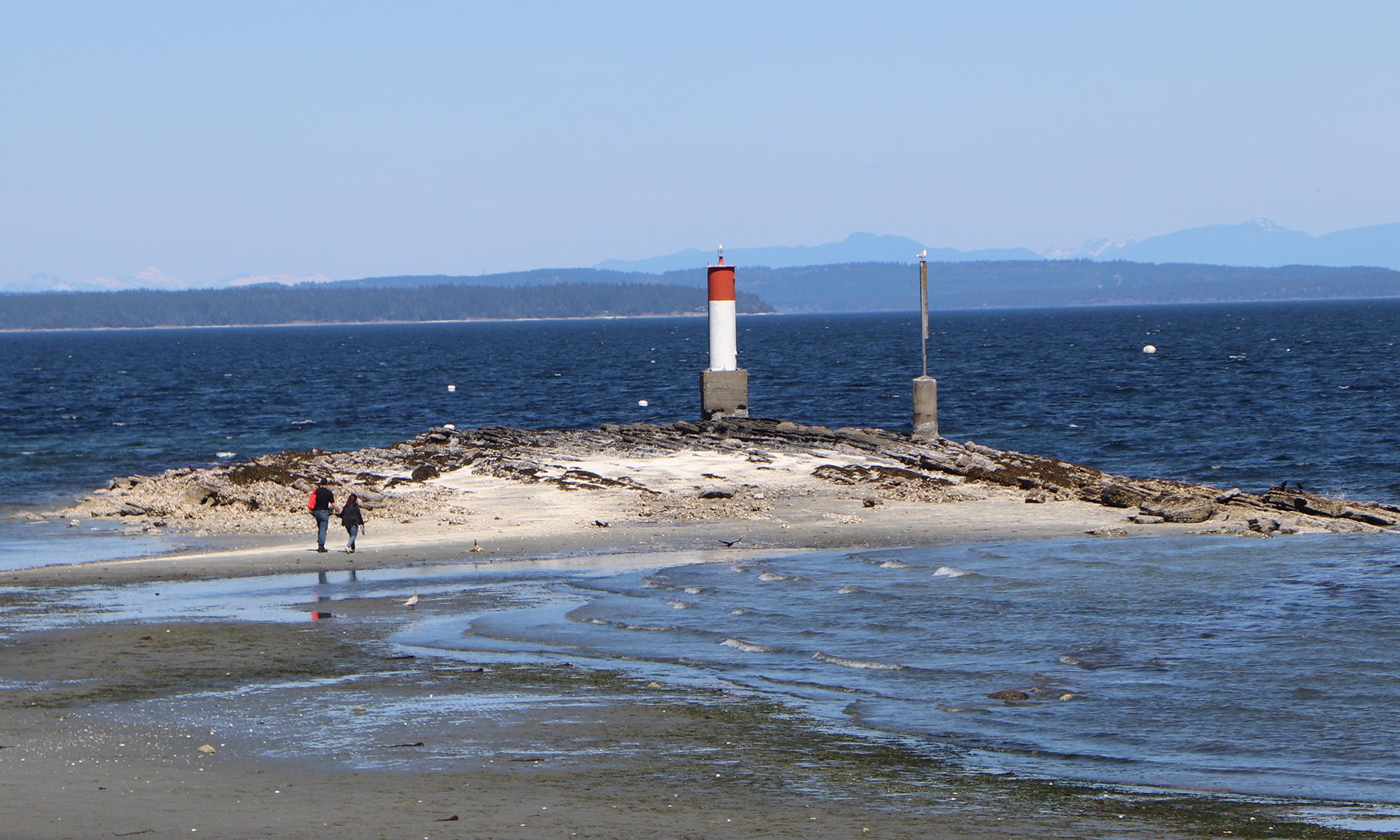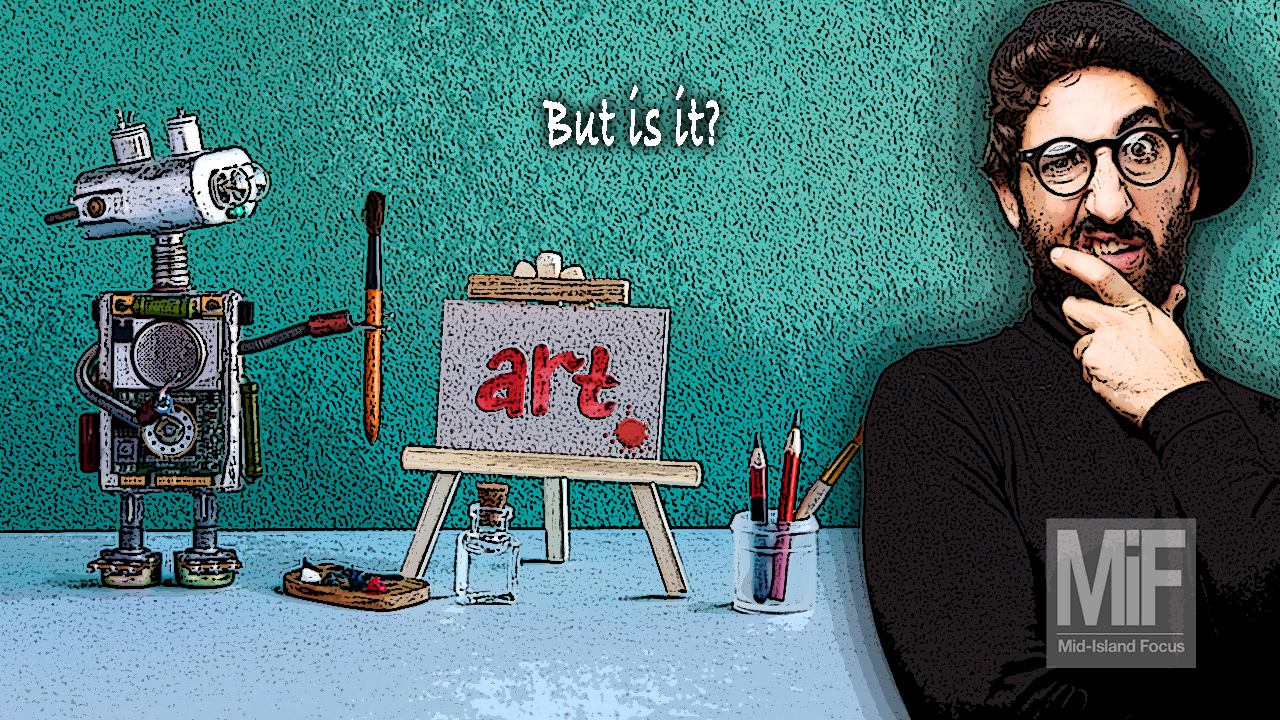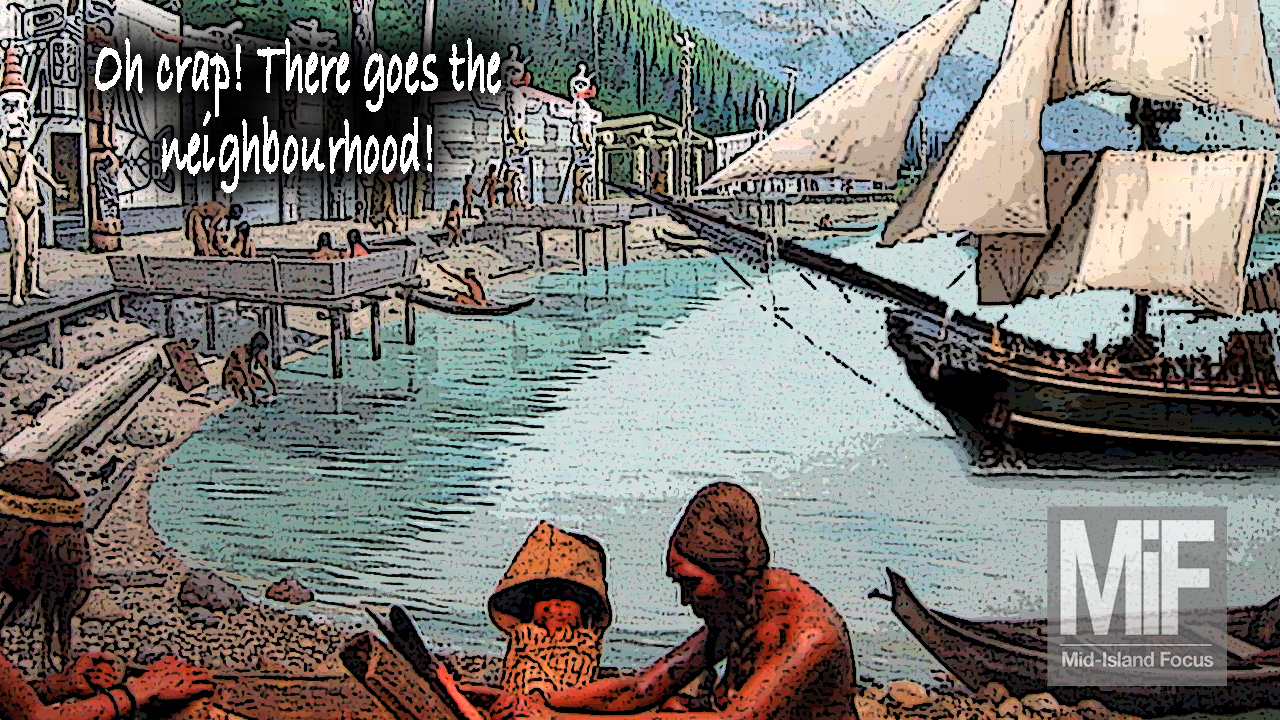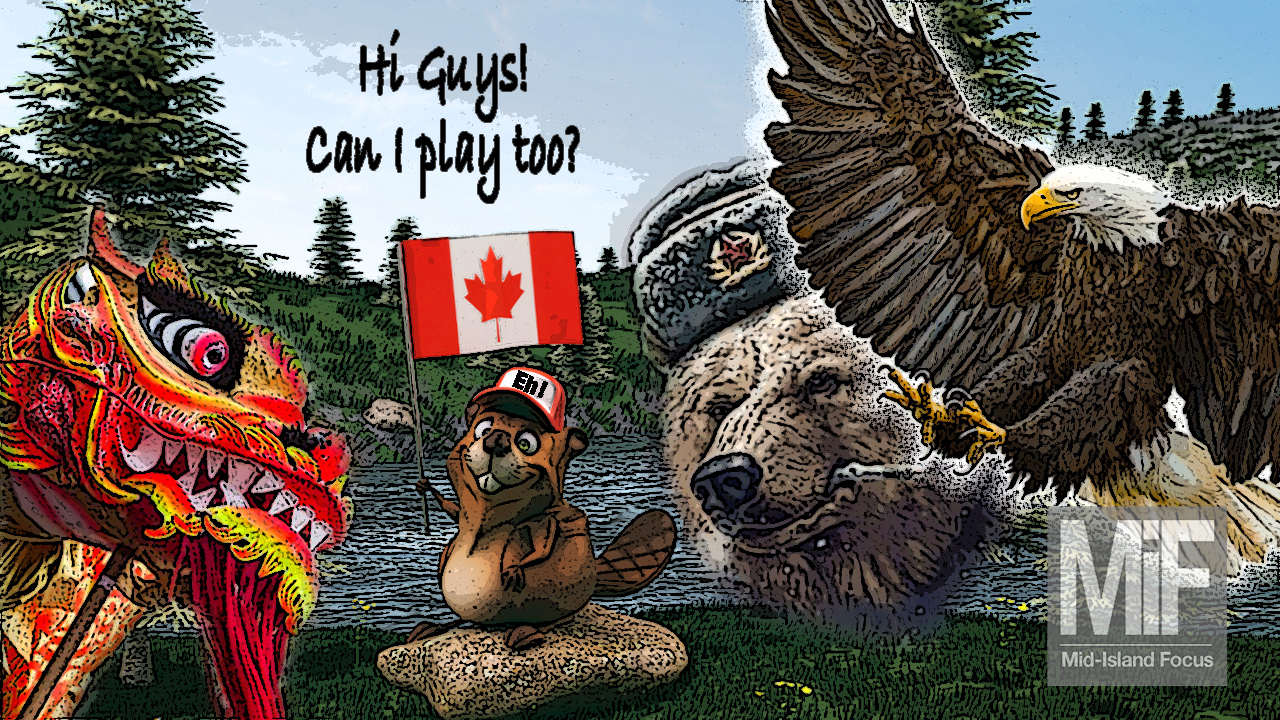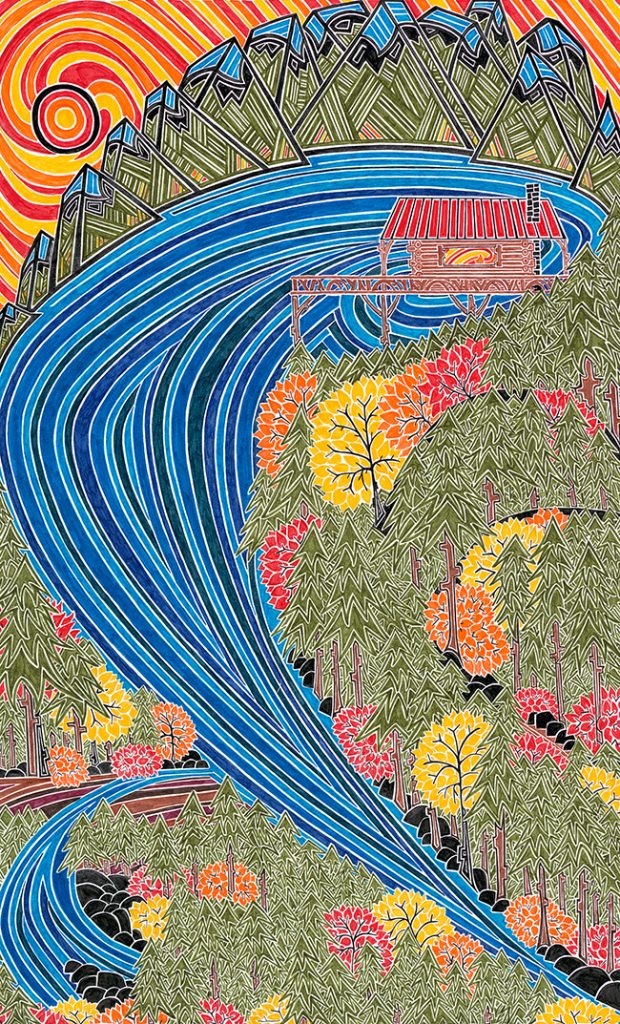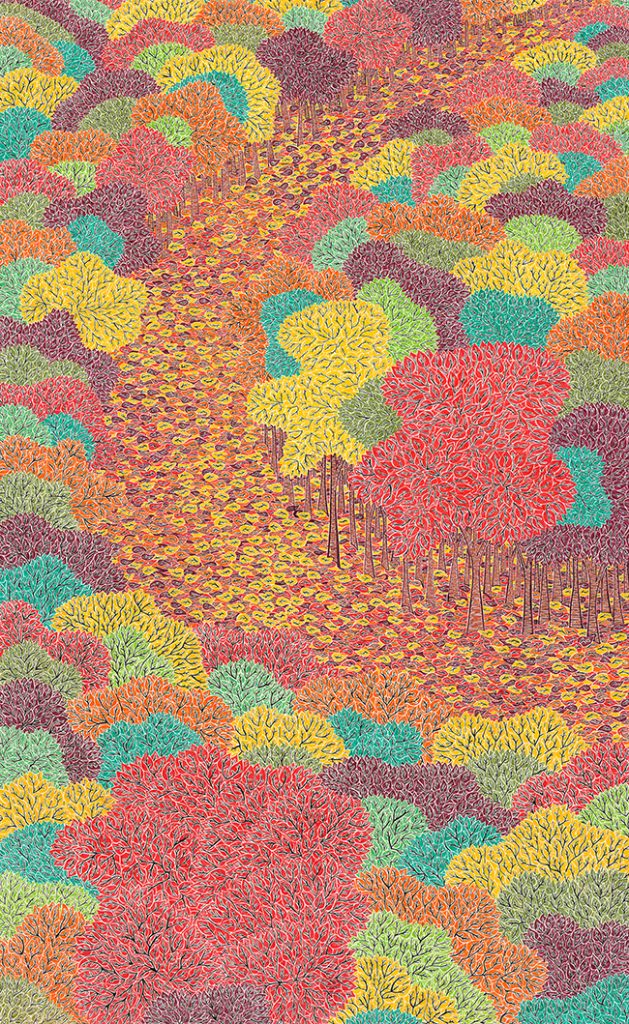Pinned to a cork board on the wall of Linda Yurgensen’s studio is a photo of her and her father painting together during a recent trip she took back to her home province, Nova Scotia. It’s a reminder of her very first inclination to translate reality into a representative vision through art.
Retired now, Allen Horne was a pipe fitter and plumber during working hours; father to six children, and an avid hunter and painter when time permitted. He first inspired his daughter to pick up pencil and brush.
“I grew up watching my father paint, he painted part time – never really showing his work anywhere,” she recalled. She remembers sketching, and occasionally asking if she could use some of his paint in her own works.
But after she entered her teens, the love of painting went dormant in Yurgensen for many years. “I did it up to a certain age, until I was maybe 13 or 14, and then I kind-of forgot about it,” she said.
She married, worked, raised a family and moved – in 1992 – to the Cobble Hill home, where she and her husband Eric still live. “For years and years it didn’t really occur to me to pick up a paintbrush,” she said. Not, in fact, until 10 or 12 years ago, a hiatus of about three decades, did she set brush to canvas again.
Once again, her dad helped her get going. “My father kind of encouraged me,” she recounted. “He sent me a book for Christmas one year, Painting with Pastels, and that’s how I first started, pastels.”
Since then, she’s been making up for lost time in the narrow studio, which looks suspiciously like a converted front porch, where she works. The urge to paint has become “an overwhelming desire to do something creative,” she said. What inspires her now are the forests, landscapes and seascapes of her Vancouver Island home… and always colour, vibrant hues of reflected sunlight.
“I just did it for the enjoyment of it, basically. And I noticed as I was doing it my work was getting better,” she said.
She took one course in watercolours, tried pastels, went on to acrylics, but gravitated to oils as her preferred medium. “Oil is my love,” she said. “I really love oil, probably won’t ever leave oil.” Although she’s self-taught and paints by her own light, Yurgensen does admire The Group of Seven, and some of her work is reminiscent of Canada’s most famous artistic movement.
And like the Group of Seven, her work is deeply evocative of place, of Vancouver Island. We do get plenty of cloudy, rain-sodden days here, but Yurgensen sees and portrays them as anything but drab. “When I look at a foggy day, even, I’m not seeing grey, I’ll see purple and blue.”
She wants viewers to experience her new homeland’s contours, shapes and hues through her art. “I’m hoping they see the West Coast as I do, not as a drab place, but the beautiful, green, lush, colourful rainforest, which is Vancouver Island,” she said. “Before I came I had no idea that this was here, now I’m never going to leave.”
To achieve the feel she wants, Yurgensen starts with a primed canvas, colours that with a primary colour, ‘something bright’ in acrylic. Then she paints her scene on, again in acrylic. “When that’s all dry,” she said, “I go in with my oils, but I don’t layer, I just lay the colours side-by-side, so you get an optical illusion when you look at it. It’s not blended.”
The artist’s life isn’t easy. Getting your work into galleries is hard, and when the work is rejected, it’s hard not to question why. “You wonder, it it the art, or is it just not the right time?” You have to push through and keep going. “I would say, just keep doing what you love, and eventually, others are going to love it too,” Yurgensen said.
Linda Yurgensen will be featured artist January 6 through February at Rainforest Arts, 9781 Willow Street in Chemainus, open from 11 am to 4 pm daily. She will be hosting an art demo Saturday, Jan. 18 from 2 to 4pm at the gallery.
